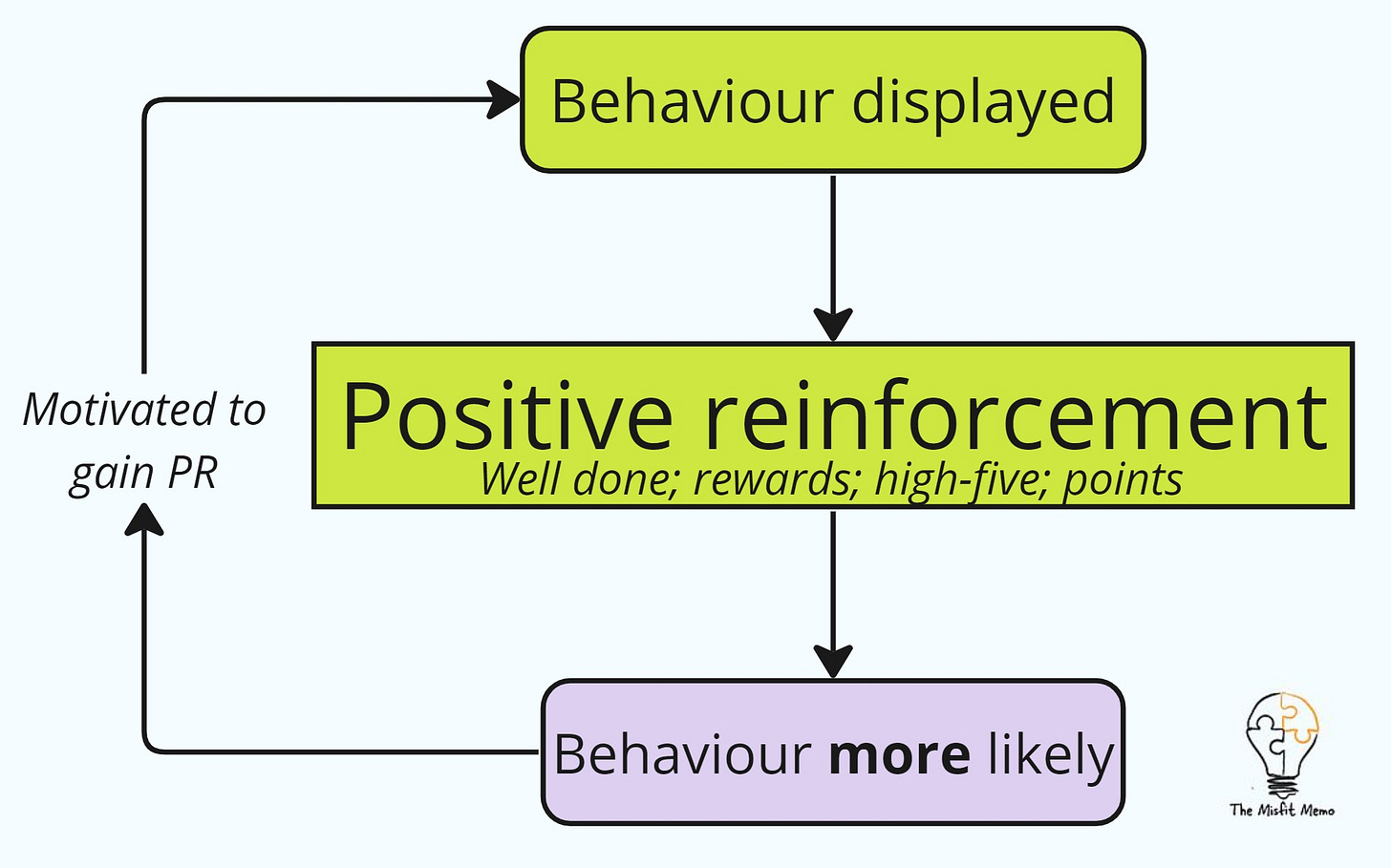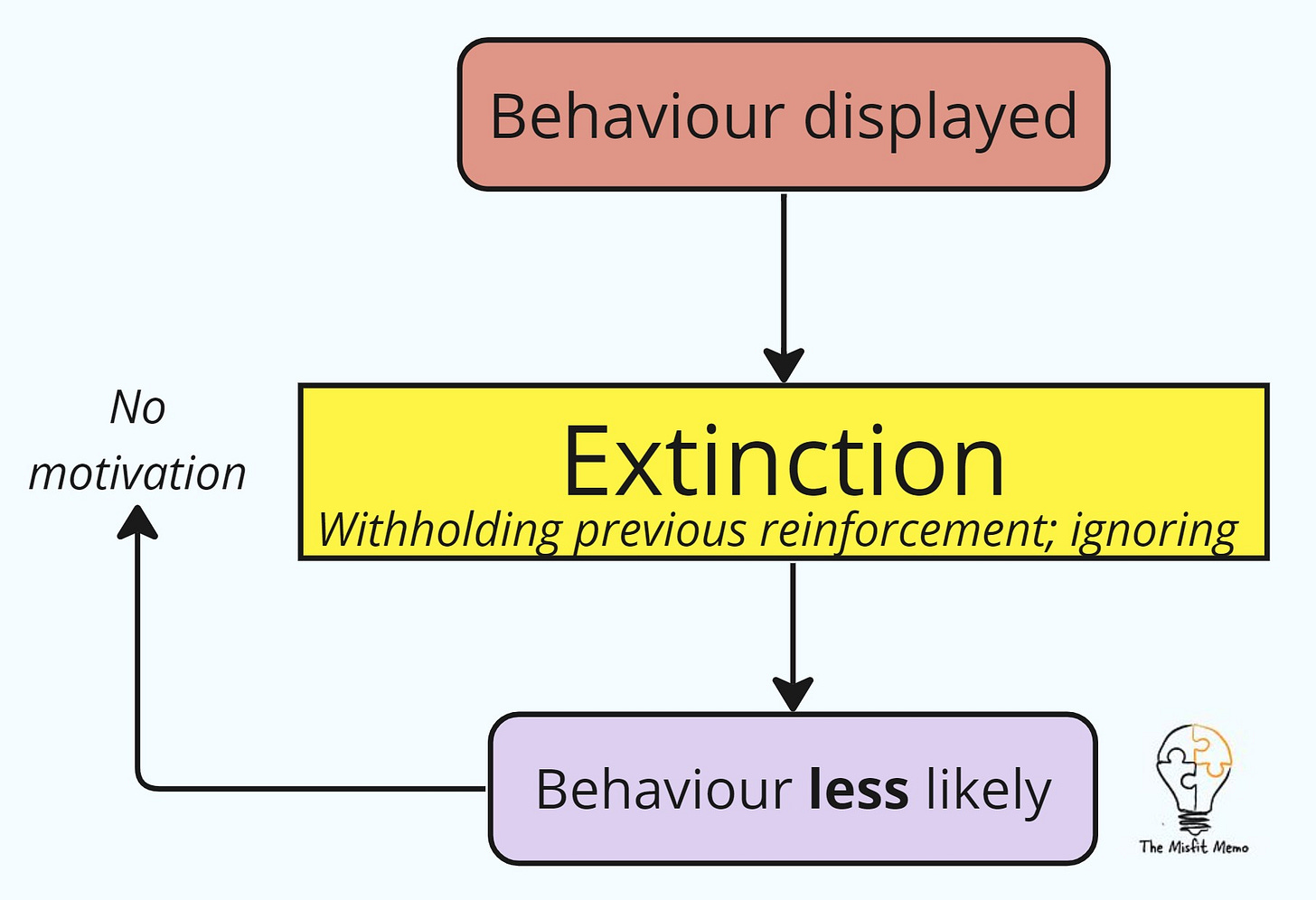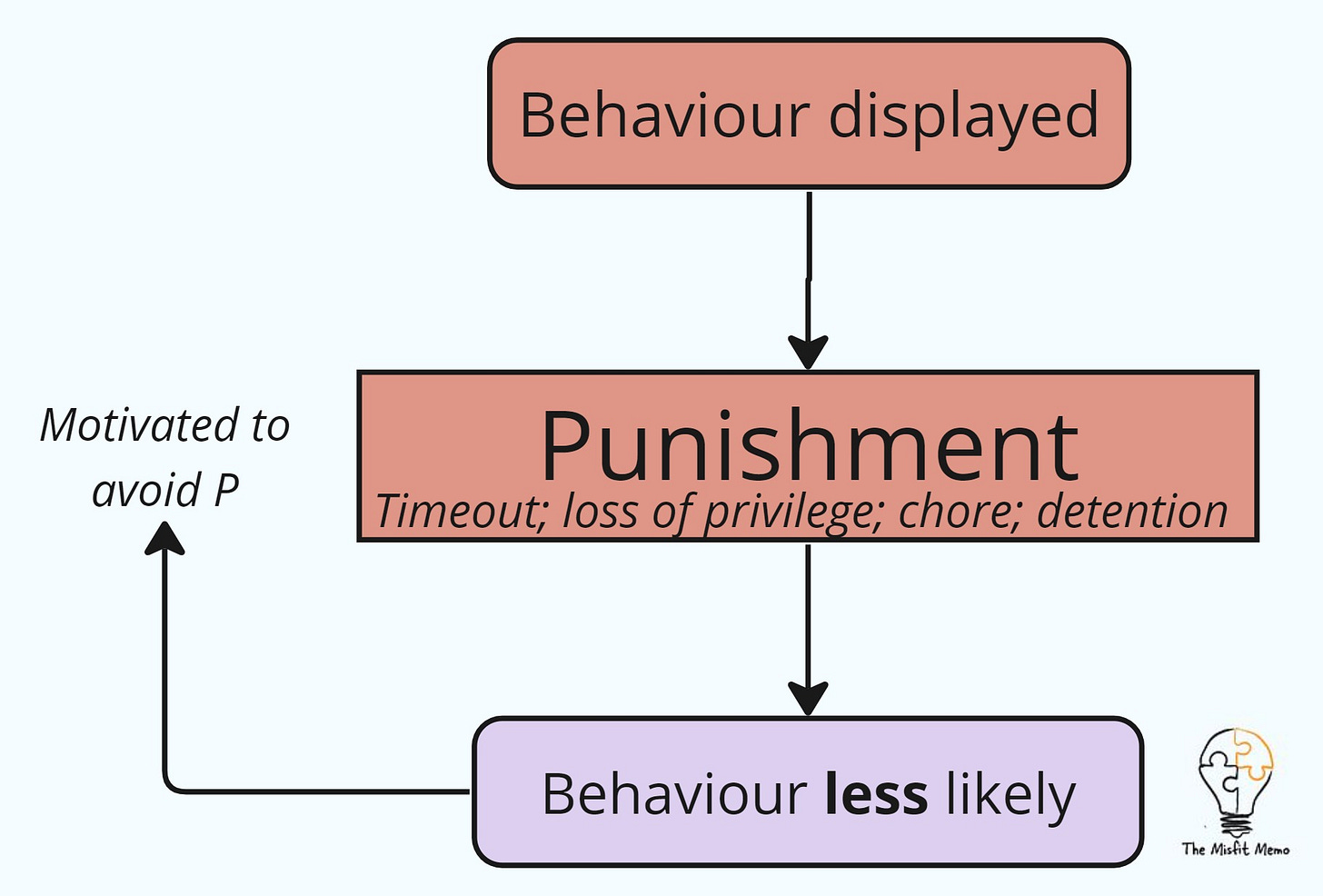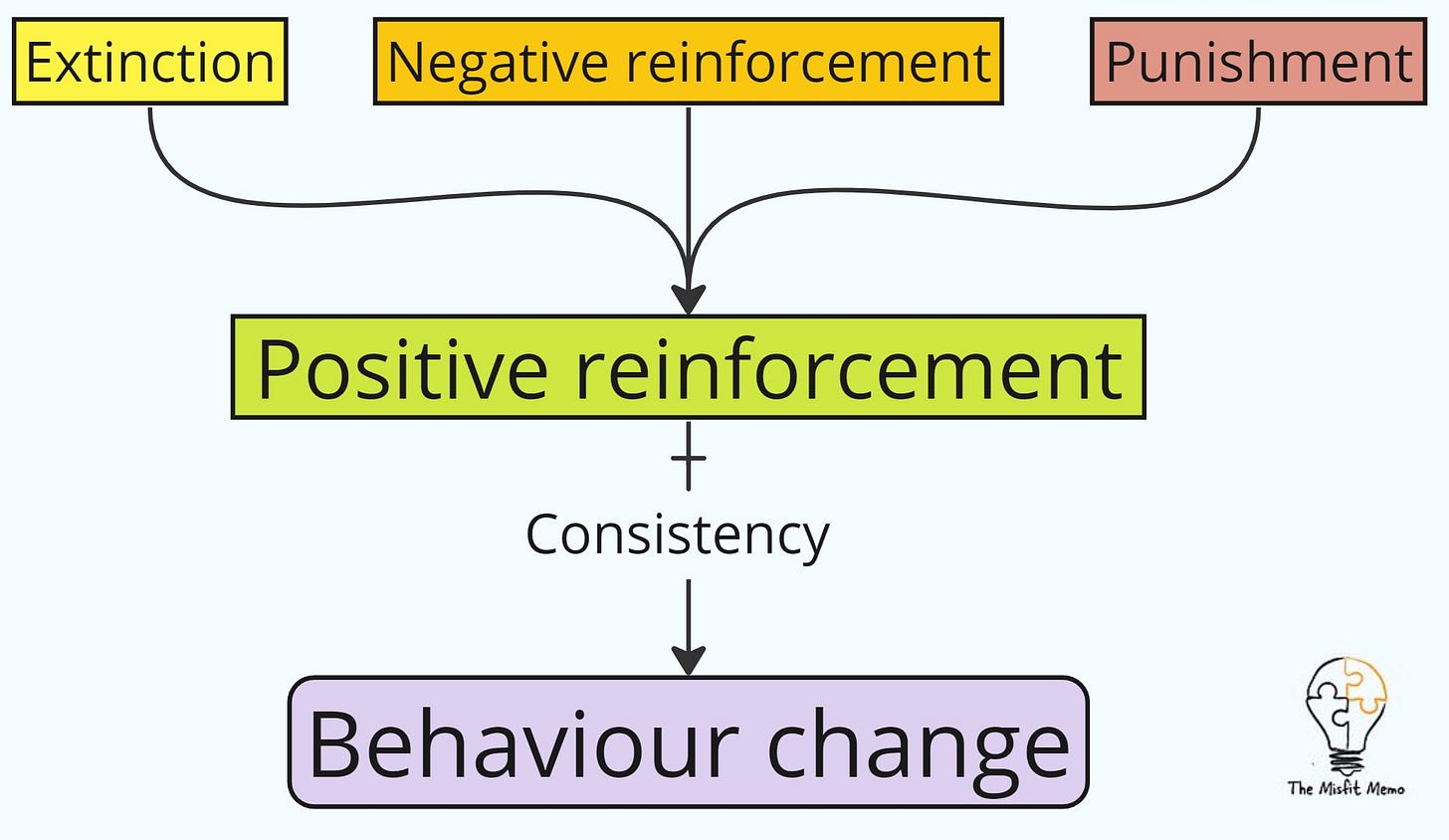Toppling a tiny tyrant. How to take back control of the house
Strategies for effective behaviour reinforcement in children
“The power to influence behaviour lies in understanding and manipulating the environment that surrounds it”. - B.F. Skinner
Being run ragged by someone a third your size is a rite of passage for any parent, but keeping their tyrannical regime to a minimum is in the best interests of parents and, more importantly, the child.
Recognising how to capably conduct ourselves in the world is a skill learned in the same way as writing or keepie uppies, and it’s our responsibility to teach that skill. Yet too often, we attach adult perspectives to the actions of children when they are simply cultivating their ability to predict which communication strategy will most likely achieve their current goal. Therefore, it’s crucial to be mindful of what exactly is being reinforced as we want to teach socially desirable communication skills that allow them to handle the demands of growing up.
What encourages behaviour?
The consequences, whether positive, negative or non-existent, which follow a behaviour, determine whether it is likely to happen again.
We shouldn’t assume that a particular response, like sending a student to the principal’s office, will have the desired effect of lessening a behaviour, as this could be an ideal outcome for students motivated by escape. In the same vein, even though it is less embarrassing to give in to the screaming match in a supermarket, you need to bear in mind that your reaction will be logged and harder to modify down the line. Therefore, we need a proactive plan for what communication skills we want to reinforce and how.
Positive reinforcement
Positive consequences increase the likelihood of a desired behaviour occurring again.
Positive reinforcement is a powerful tool as it triggers a direct dopamine response, which our brain logs and therefore craves, which is why, no matter what age you are, a “well-done” or “good effort” goes a long way. Humans are intensely social creatures, constantly on the lookout for ways to receive a sliver of external praise (the biological mechanism high-jacked by social media), and children are no different. The tantrum in the morning will get all our attention, yet being ready for school on time is the skill we want to reinforce. So when they’re no fuss at all, be sure to dispense the praise.
Negative reinforcement
Removing an unpleasant stimulus or consequence to increase the likelihood of a behaviour being repeated.
Negative reinforcement is classic nagging in the hope it will change a behaviour. If you demonstrate what is expected, then the nagging stops (unpleasant stimulus removed) and you are encouraged to keep it that way. It’s also the action of completing chores, tasks or assigned punishments to get a preferred outcome, which teaches children to negotiate rather than demand and to earn rather than expect.
Extinction
Withholding reinforcement that previously followed a behaviour, leads to a decrease in the frequency of that behaviour.
If you put money in your usual vending machine, and it doesn’t give you a Snickers, you would quickly discontinue use of it and find one that worked. Ignoring a behaviour works the same way, as even though their vitriolic tantrum was previously rewarded with an iPad, simply ignoring or waiting it out will decrease its effect over time.
Punishment
Applying consequences to decrease the likelihood of an undesired behaviour
Physical forms of punishment are harmful to children and aren’t effective – controversial, I know. Even non-physical punishments don’t necessarily result in sustained behaviour change and can have side effects, like increased aggression, vandalism and tardiness. However, punishments like time-out and loss of privileges have a place if used properly alongside a positive behaviour approach. Unfortunately, schools have a history of hastily jumping to exclusionary approaches before considering the other methods listed above, especially with boys.
Stay positive
Whatever mix of strategies you decide to try, positive reinforcement should be at the heart of it. Take the previous extinction example. No matter what scene a child is causing, if they stop for just a breath, praise for trying to calm down shows them what you're expecting. Then, when they finally mellow out, no matter how annoying they have been or what state the living room is in, the praise must be plentiful. Furthermore, not only is positive reinforcement the most effective, but it also models a positive culture and a way of acting in society, which children can emulate.
Once you know the function of a behaviour and how it’s being reinforced, it’s time to implement your strategy consistently, which I will discuss in my next article.
If any sections of this article have left you with unanswered questions, feel free to continue the discussion in the comment section below.
Oh behave! The tactics of a temper tantrum - How to analyse the function of children's behaviour
The Dopamine Industrial Complex - They’ve been hacking adults for centuries, and now they have the kids
Helicopter parents or surveillance drones? - The link between overprotective parenting and the mental health crisis
New academic year, same old bullies - The psychological warfare of school yard tyrants
Worrying about worry - The science behind anxiety and its effect on children
Attention deficit or sleep-deprived? - The relationship between ADHD, focus, and sleep.










Such important guidelines for young parents (and the future of our children/ humanity)! Thank you for your work 💕🙏